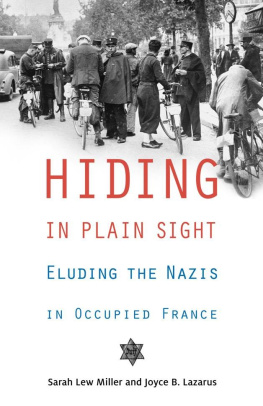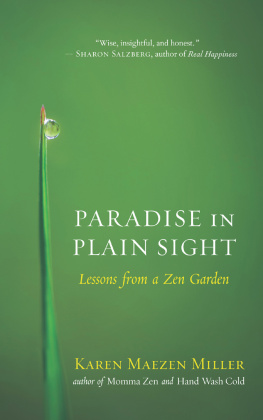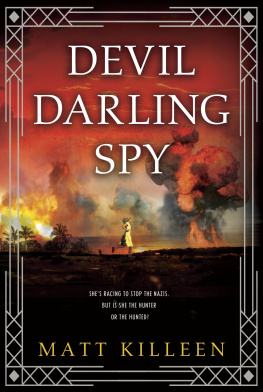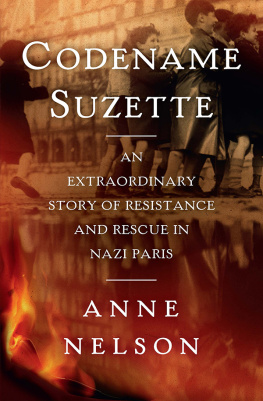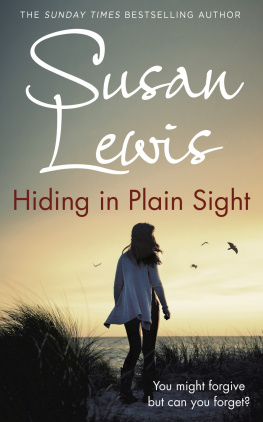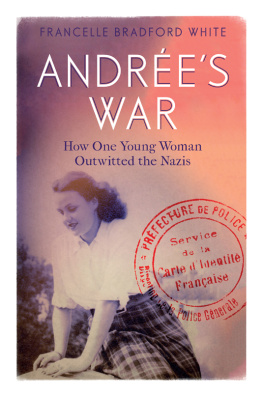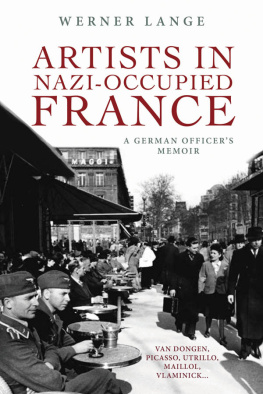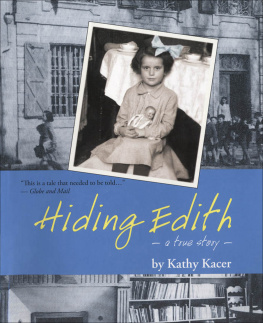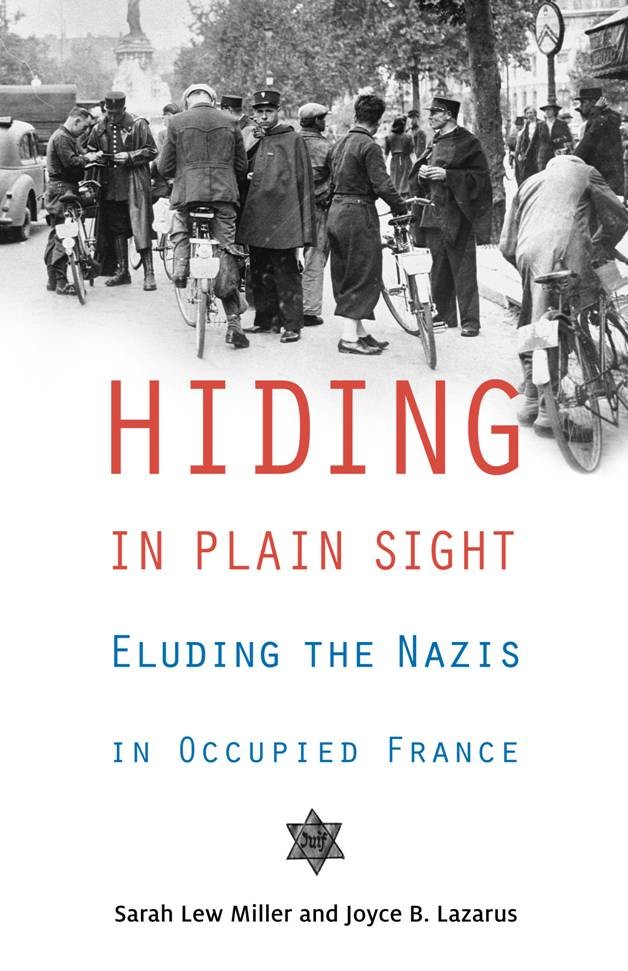
Table of Contents
HIDING
IN PLAIN SIGHT
Eluding the Nazis
in Occupied France
Sarah Lew Miller and Joyce B. Lazarus
Academy Chicago Publishers
Published in 2012 by
Academy Chicago Publishers
363 West Erie Street
Chicago, Illinois 60654
2012 by Sarah Lew Miller and Joyce B. Lazarus
First edition.
Printed and bound in the U.S.A.
All rights reserved.
No part of this book may be reproduced in any form without the express written permission of the publisher.
Library of Congress Cataloging-in-Publication Data
Miller, Sarah Lew, 1926
Hiding in plain sight : eluding the Nazis in occupied France / Sarah Lew Miller and Joyce B. Lazarus.1st ed.
p. cm.
Includes bibliographical references.
ISBN 978-0-89733-678-9 (hardcover)
1. Miller, Sarah Lew, 1926 2. JewsFranceBiography. 3. Holocaust,
Jewish (19391945)FrancePersonal narratives. 4. Jewish children in the
HolocaustFranceBiography. 5. World War (19391945)Personal
narratives, Jewish. 6. FranceHistoryGerman occupation, 19401945.I. Lazarus, Joyce Block. II. Title.
DS135.F9M556 2012
940.5318092dc23
[B]
2012031075
ACKNOWLEDGMENTS
We would like to express our appreciation to all those who helped us in the writing and publication of this memoir.
Many thanks to Sarahs relatives who shared with us their recollections, letters and insights, making a valuable contribution to the book: Michel Szlamka, Ava Szlamka, Simone Fiszbin, Claire Weinfeld, Madeleine Laufer and Max Lew.
Thanks to Dr. Diane Afoumado, at the U.S. Holocaust Memorial Museum in Washington, D.C., who provided important documents related to the German occupation of France.
We are very grateful to Dr. Anita Miller and Jordan Miller, to Mary Egan, Zhanna Vaynberg, and Rebecca Baumann at Academy Chicago Publishers for their support, helpfulness, and hard work in the production of this book.
Lastly, we owe a debt of gratitude to Sarahs children, Rebecca and Gabriel; to mine, Suzanne, Marty and Michael; and to my husband Carl, for their steadfast encouragement, support and love.
PREFACE
So much has already been written about the Vichy yearsthe Dark Yearsthat it seems at first glance that there may be nothing new to say. There have been countless historical studies, novels, and many award-winning films, such as Marcel Ophulss Le Chagrin et la Piti (The Sorrow and the Pity, 1969); Franois Truffauts Le Dernier Mtro ( The Last Metro , 1980); and Louis Malles Au Revoir, les Enfants ( Goodbye, Children , 1987), to name just a few.
So why now?
It is because I had the good fortune to meet Sarah Miller, a survivor of the Occupation in France, who had a unique story to tell. Her Polish-Jewish immigrant family miraculously survived four years of German occupation, against overwhelming odds. I learned from Sarah Miller about day-to-day life as a teenager in occupied France, living with the ever-present threat of death. She told me how her family of ten had gone into hiding in cities and rural villages scattered around France. They had survived thanks to their own resourcefulness and thanks to assistance given to them by many Christians and by members of the Jewish Resistance. I realized that there was so much about this period that I still wanted to understand, after reading history books and memoirs that left many questions unanswered. I wanted to know whether Jewish life had been able to continue throughout the Occupation (yes, it had) and how neighbors, French police officers, and strangers had all responded to the persecution of Jews.
Our conversations and correspondence led to the creation of this memoir, Hiding in Plain Sight: Eluding the Nazis in Occupied France, which relates the childhood and young adulthood of Sarah Lew Miller (born in 1926) during the years 19321948. All events mentioned in this book are true and the characters are real. While family members are given their real names in this narrative, friends, acquaintances, and strangers have been given fictitious names because they have not given us permission to use their names.
While historical studies paint a broad picture of momentous events, they often do not bring to life everyday occurrences and chance encounters that can make the difference between life and death. This is what I wanted to explore with Sarah Miller, as we relived together the years 19321948 in first-person narrative form. The memoir is both personal and historicalit is the life of an entire nationFranceand that of one family and their teenage girl Sarah.
During the German occupation of France (19401944), nearly 80,000 Jews were murdered, including almost 11,000 children. This memoir tells the story of some who survived the Occupation and also of those who perished during this tragic period.
I read a remarkable story written by Sarah Miller entitled, Oh, Beautiful Switzerland, How I Remember Thee! She described her terrifying escape to Switzerland and a young man from the Sixime , a Jewish Resistance organization, who had saved her life. The story of heroesJewish and non-Jewishwho risked their lives every day and whose acts of bravery and courage are not well known was a story we both felt should be told. As I got to know Sarahs family members through our correspondence, I realized that her siblings and parents, and in particular her mother, showed much valor as well. As we see one familys way of coping with a terrible social and political crisis, we can learn much about ourselves and our own society.
We met each other in a serendipitous way. I had recently published a book called In the Shadow of Vichy: the Finaly Affair ( Lang, 2008) and had given a copy of it to my cousins Norman Rogoff and Rosalind Guild, who live in a senior residence in Canton, Massachusetts. After finishing it, they donated it to their library and Sarah Miller picked up the book there. I had signed it and written a personal message inside to my cousins. Sarah realized immediately that her own life story was related to the story I had been writing aboutJewish survival during the Vichy period and its aftermathand she wanted to ask me some questions. Norman Rogoff copied down her e-mail address for me on a small napkin he was holding and we soon began to correspond.
While working on this project together, Sarah Miller and I discovered that we had much in common: her parents and my grandparents were Orthodox Jews from Eastern Europe and their large families both immigrated to Paris. My grandparents knew many hardships, as do all immigrants, but they did not face life-or-death situations on a daily basis, as Sarahs family did. The dream of playing music was very important for Sarah Miller as well as for my parents and for myself as we were growing up. I knew, however, that Sarah Millers generation had very limited opportunities for women, compared to mine. It is important to highlight the differences between the era of the 1930s and 1940s and that of later generations. Working together has been a creative, fulfilling, and exciting experience. I am very thankful to Sarah Miller for having this opportunity.
Joyce B. Lazarus, March, 2012
* * *
While watching my children growing up free, happy and without worries, many memories of my youth and my family came to mind. What a different world I grew up in! The need to write my story for them was there, but the courage and the time to begin it? Not yet.
Years later, with the children grown and my husband and I retired, I took a creative writing class at the Jewish Center in Stamford, Connecticut, where we lived. One day our teacher announced that the city of Stamford was sponsoring a writing contest for all ages, and she would like us all to participate. I hesitated, somewhat shy, but suddenly, without hesitation, I sat down at my desk and wrote, Oh Beautiful Switzerland How I Remember Thee, the saga of a group of Jewish children smuggled into Switzerland during the Holocaust years. Thanks to the French Jewish Resistance group called La Sixime , I was one of them.
Next page
